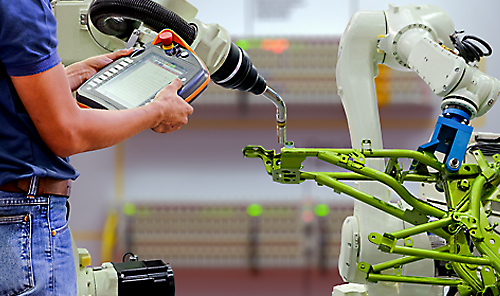Are you afraid of being replaced by a robot at work? You’re not alone. With the rise of automation, more and more jobs are being taken over by machines, including terrifying tool bots that can do everything from assembly to customer service. But are these robots really as scary as they seem?
In this article, we’ll take a closer look at the world of tool bots, exploring their benefits and drawbacks, their impact on the job market, and what the future might hold for these increasingly common machines.
What Are Tool Bots?
Tool bots are essentially specialized robots designed to perform specific tasks in various industries. These tasks can range from simple machine operations to complex customer interactions, depending on the bot’s programming and capabilities.
Some common types of tool bots include:
1. Assembly line bots: These robots are designed to perform repetitive tasks such as welding, painting, or screwing bolts into place on an assembly line.
2. Customer service bots: These bots can help customers with simple inquiries or provide basic information about products or services.
3. Maintenance bots: These bots are used to inspect and repair equipment or infrastructure in dangerous or hard-to-reach locations.
4. Delivery bots: These robots are used to transport goods or products within a specified area, such as a warehouse or manufacturing plant.
Benefits of Tool Bots
There are several benefits to using tool bots in various industries. For one thing, they can improve efficiency and productivity by performing repetitive or dangerous tasks that humans may not be able to do safely or accurately. They can also reduce labor costs by eliminating the need for human workers in certain areas.
Additionally, tool bots can work around the clock without getting tired or taking breaks, which means they can complete tasks faster than humans could. This can be especially useful in industries where time is of the essence, such as manufacturing or shipping.
Drawbacks of Tool Bots
Despite their many benefits, tool bots also have some drawbacks that need to be considered. For one thing, they can be expensive to purchase and maintain, which may not be feasible for smaller businesses or industries with lower profit margins.
Additionally, tool bots may not always perform as well as human workers in certain situations. For example, customer service bots may struggle to handle complex inquiries or provide adequate emotional support for customers who are upset or frustrated.
There is also the concern that tool bots could eventually replace human workers altogether, leading to widespread unemployment and economic instability. While this scenario may seem far-fetched, it’s important to consider the long-term implications of automation and what it could mean for the future of work.
Impact on the Job Market
One of the biggest concerns surrounding tool bots is their potential impact on the job market. As more and more industries turn to automation to improve efficiency and reduce costs, there is a real risk that many jobs will become obsolete.
According to a recent report by McKinsey Global Institute, up to 800 million jobs worldwide could be lost due to automation by 2030. This includes both low-skilled jobs such as assembly line workers and high-skilled jobs such as accountants or lawyers.
However, it’s important to note that while some jobs may disappear due to automation, new ones will also emerge. For example, there will likely be an increased demand for workers who can design, program, and maintain these machines.
What Does the Future Hold?
So what does the future hold for tool bots and automation in general? While it’s impossible to predict exactly how things will play out, experts agree that we are likely to see continued growth in this area over the coming years.
As technology continues to advance and become more affordable, more businesses will likely turn to automation as a way to improve efficiency and reduce costs. However, it’s also possible that concerns about job loss and economic inequality could lead to increased regulation or even a backlash against automation in some areas.
Regardless of what happens, it’s clear that tool bots are here to stay. Whether they end up being a force for good or evil remains to be seen, but one thing is certain: they are changing the way we work and live in profound ways.
References:
1. “The Future of Jobs Report 2018.” World Economic Forum. https://www.weforum.org/reports/the-future-of-jobs-report-2018
2. “Automation and the Future of Work.” McKinsey Global Institute. https://www.mckinsey.com/featured-insights/future-of-work/automation-and-the-future-of-work




